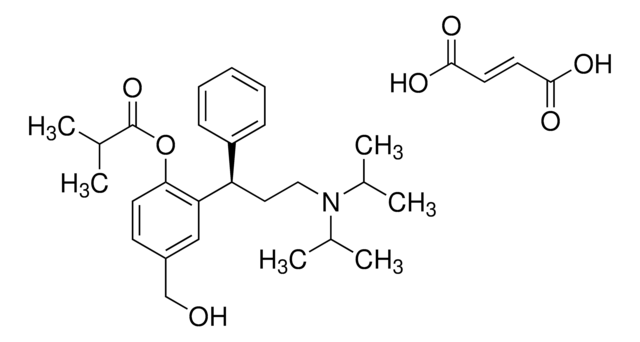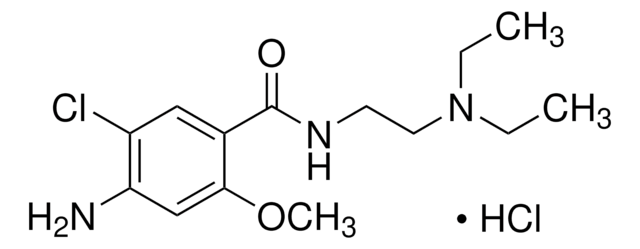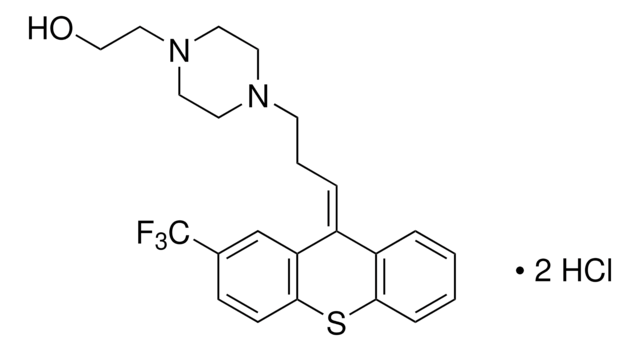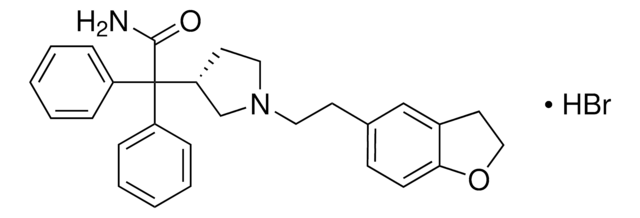SML1102
Darifenacin hydrobromide
≥98% (HPLC)
Sinonimo/i:
(3S)-1-[2-(2,3-Dihydro-5-benzofuranyl)ethyl]-α,α-diphenyl-3-pyrrolidineacetamide hydrobromide, UK 88525-04
About This Item
Prodotti consigliati
Saggio
≥98% (HPLC)
Forma fisica
powder
Attività ottica
[α]/D +41 to +49°, c = 1 in methylene chloride
Condizioni di stoccaggio
desiccated
Colore
white to beige
Solubilità
DMSO: 20 mg/mL, clear
Temperatura di conservazione
−20°C
Stringa SMILE
O=C(N)C([C@H]1CN(CCC2=CC=C(OCC3)C3=C2)CC1)(C4=CC=CC=C4)C5=CC=CC=C5.Br
InChI
1S/C28H30N2O2.BrH/c29-27(31)28(23-7-3-1-4-8-23,24-9-5-2-6-10-24)25-14-17-30(20-25)16-13-21-11-12-26-22(19-21)15-18-32-26;/h1-12,19,25H,13-18,20H2,(H2,29,31);1H/t25-;/m1./s1
UQAVIASOPREUIT-VQIWEWKSSA-N
Informazioni sul gene
human ... CHRM2(1129) , CHRM3(1131)
Cerchi prodotti simili? Visita Guida al confronto tra prodotti
Descrizione generale
Applicazioni
Azioni biochim/fisiol
Caratteristiche e vantaggi
Avvertenze
Warning
Indicazioni di pericolo
Consigli di prudenza
Classi di pericolo
Eye Irrit. 2 - Skin Irrit. 2 - STOT SE 3
Organi bersaglio
Respiratory system
Codice della classe di stoccaggio
11 - Combustible Solids
Classe di pericolosità dell'acqua (WGK)
WGK 3
Punto d’infiammabilità (°F)
Not applicable
Punto d’infiammabilità (°C)
Not applicable
Certificati d'analisi (COA)
Cerca il Certificati d'analisi (COA) digitando il numero di lotto/batch corrispondente. I numeri di lotto o di batch sono stampati sull'etichetta dei prodotti dopo la parola ‘Lotto’ o ‘Batch’.
Possiedi già questo prodotto?
I documenti relativi ai prodotti acquistati recentemente sono disponibili nell’Archivio dei documenti.
Il team dei nostri ricercatori vanta grande esperienza in tutte le aree della ricerca quali Life Science, scienza dei materiali, sintesi chimica, cromatografia, discipline analitiche, ecc..
Contatta l'Assistenza Tecnica.









